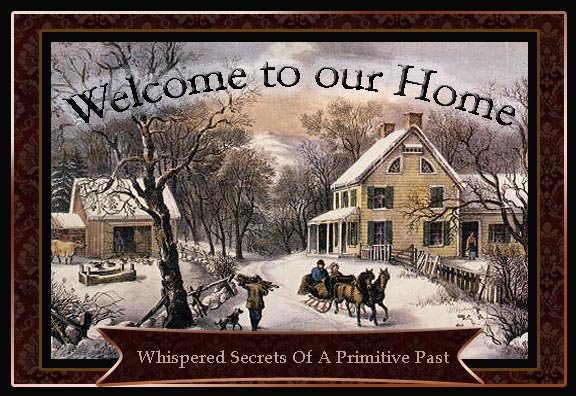 A HISTORY OF RUG HOOKING
A HISTORY OF RUG HOOKINGRug hooking started in the United States in the Mid-1800's. It was very popular in in the New England states and the Maritime provinces of Canada. Like many crafts it was started out of sheer necessity. The rugs were used on the floors in the summer and on the beds in the winter. The first rugs were made out of any scrap material that could be found, including worn clothing and old discarded wool blankets. The base of the rug was made from the burlap sacks that the livestock feed came in.

Later, people began selling hand-hooked rugs, and cottage industries eventually sprang up across the continent. By the 1940’s, rug hooking had become a well-established hobby in the United States and Canada. Hand-hooked rugs can be found in art galleries and museums in throughout the world.
Traditional Styles
Fine Hooked Rugs with thinner strips of material and a variety of shading techniques are used. Primitive Hooked Rugs use wider strips of material and generally little shading is involved.
The tools are the same in either of these forms. Here is a list of the basic equipment needed:
1. A hand hook - to form a loop pile on the surface of the backing material
2. A Frame - to hold the base material in place for hooking, there are many different types of frames from very simple needlepoint frames to large floor frames
3. Scissors - These are normally small scissors with a bent handle that allow the "hooker" to cut the material very cleanly
4. Cutter and Blades - Used to make strips of wool (or other material) from larger pieces. The thinner the strip of wool the finer the finished product will be.
5. Rug Pattern - The pattern is drawn on the Backing Material and is used as a guideline for hooking. The backing material is usually either burlap, monk's cloth or Linen.
6. Wool Material - Wool can normally be purchased by the yard of the piece and can be purchased in many different colors. You can also use old wool clothing for this and more experienced "hookers" will often custom dye their wool for a specific project.

Later, people began selling hand-hooked rugs, and cottage industries eventually sprang up across the continent. By the 1940’s, rug hooking had become a well-established hobby in the United States and Canada. Hand-hooked rugs can be found in art galleries and museums in throughout the world.
Traditional Styles
Fine Hooked Rugs with thinner strips of material and a variety of shading techniques are used. Primitive Hooked Rugs use wider strips of material and generally little shading is involved.
The tools are the same in either of these forms. Here is a list of the basic equipment needed:
1. A hand hook - to form a loop pile on the surface of the backing material
2. A Frame - to hold the base material in place for hooking, there are many different types of frames from very simple needlepoint frames to large floor frames
3. Scissors - These are normally small scissors with a bent handle that allow the "hooker" to cut the material very cleanly
4. Cutter and Blades - Used to make strips of wool (or other material) from larger pieces. The thinner the strip of wool the finer the finished product will be.
5. Rug Pattern - The pattern is drawn on the Backing Material and is used as a guideline for hooking. The backing material is usually either burlap, monk's cloth or Linen.
6. Wool Material - Wool can normally be purchased by the yard of the piece and can be purchased in many different colors. You can also use old wool clothing for this and more experienced "hookers" will often custom dye their wool for a specific project.
By Donna of Cameo Moon

